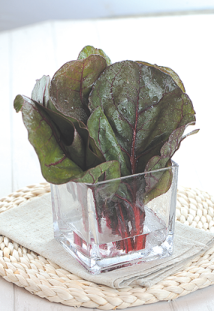Direct from the grasslands on the back of a lamb
Updated: 2016-07-30 15:10
By Liu Zhihua(China Daily)
|
||||||||
 |
|
To provide diners good food, the restaurant transports beef and lamb from its Inner Mongolia daily, but sources vegetables from Beijing.[Photo provided to China Daily] |
On the vast grassland of Inner Mongolia, nothing is better loved in hotpot than lamb, since Mongol soldiers invented hotpot when they simmered soup with lamb in their upturned helmets over campfires, she says, adding that whether or not this is merely legend is immaterial.
In China there are myriad hotpot variants distinguished by the flavors of the pot broths, including Sichuan-style spicy hotpot, Guizhou province's hot, spicy and sour fish hotpot and Inner Mongolia's light-flavored hotpot. They developed in distinct geographical and cultural environments.
If Sichuan's hotpot is the most popular variety nationwide, then Inner Mongolia's can be said to be one of the most popular in North China.
The major differences between Sichuan and Inner Mongolian hotpots, as with other hotpots, are the ingredients used to make the broth, such as whether to use chili and Sichuan pepper, as well as the foods that go into the pot.
Sichuan hotpot is famous for having animal innards such as pig brain and goose intestine, while Inner Mongolian hotpot has a larger choice of lamb and beef.
"We have lived on the grasslands generation after generation," Wan says. "We know how to herd sheep and cows, and we know the best way to eat them."
Arong Town Hot Pot opened a couple of weeks ago and already has a wide following, to the extent that a few local customers enjoy its hotpot every day. That is easy to understand once you sample its offerings.
Chinese often say the best lamb or mutton is that which has no fishy smell, and is delicious even eaten without spices or sauces.
- S. Korea to launch WWII 'comfort women' victims foundation
- China to become Australia's biggest tourist source market
- Patient shoots, kills doctor in Berlin then kills himself
- One of church attackers tried to join IS in Syria
- China's coal usage may peak by 2020, experts say
- Bavarian bomber pledged allegiance to Islamic State

 In pictures: Aerial images of Rio's Olympic venues
In pictures: Aerial images of Rio's Olympic venues
 Images reveal distinctive Tunpu culture in Guizhou
Images reveal distinctive Tunpu culture in Guizhou
 Ten photos from around China: July 22 – 28
Ten photos from around China: July 22 – 28
 Welcome back, daddy!
Welcome back, daddy!
 Sweat, hard work and pain: Life of model
Sweat, hard work and pain: Life of model
 Top 10 most profitable companies in the world
Top 10 most profitable companies in the world
 Exhibition showcases Chinese artworks in London
Exhibition showcases Chinese artworks in London
 In pics: Cool ways to beat the heat wave
In pics: Cool ways to beat the heat wave
Most Viewed
Editor's Picks

|

|

|

|

|

|
Today's Top News
Ministry slams US-Korean THAAD deployment
Two police officers shot at protest in Dallas
Abe's blame game reveals his policies failing to get results
Ending wildlife trafficking must be policy priority in Asia
Effects of supply-side reform take time to be seen
Chinese State Councilor Yang Jiechi to meet Kerry
Chinese stocks surge on back of MSCI rumors
Liang avoids jail in shooting death
US Weekly

|

|









